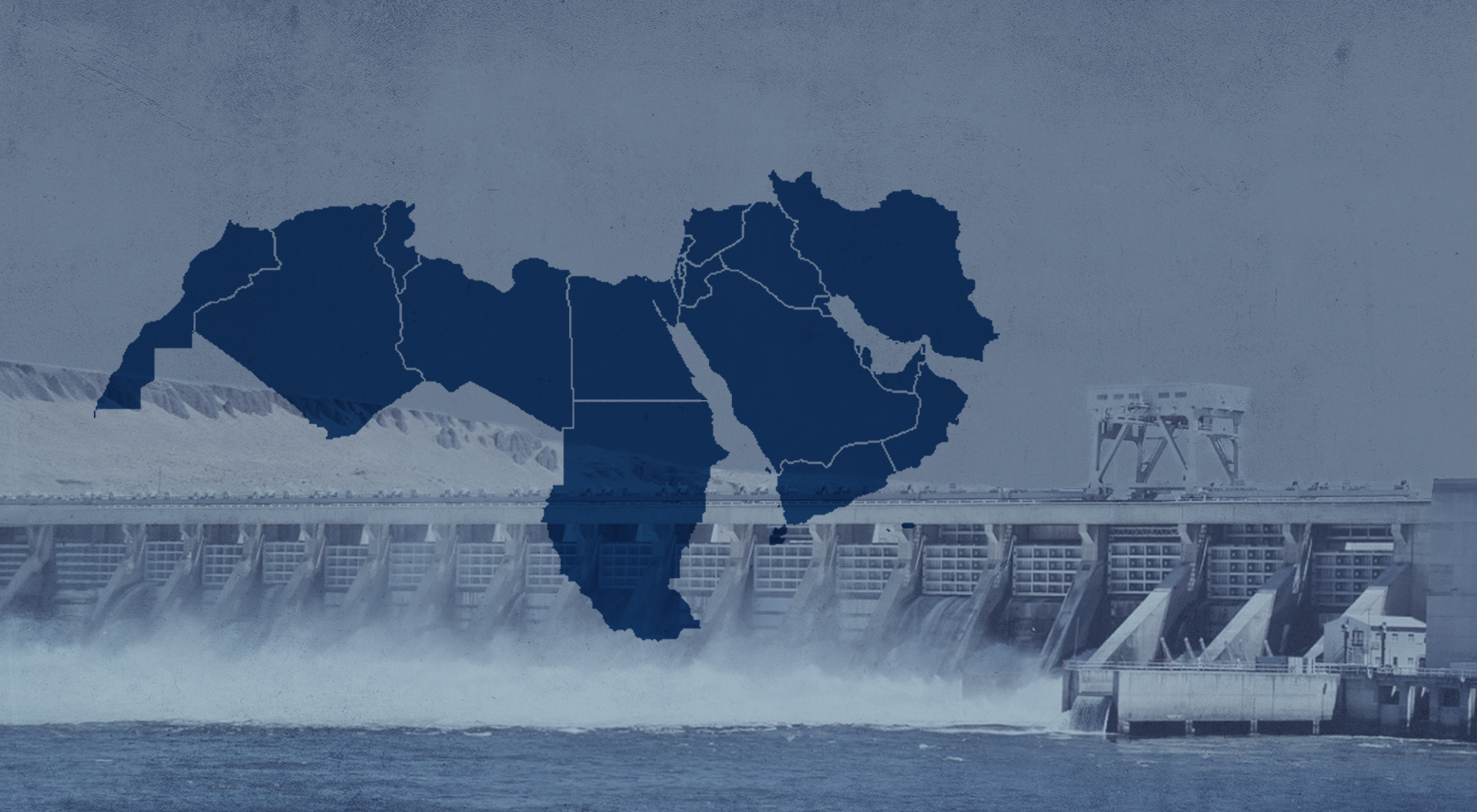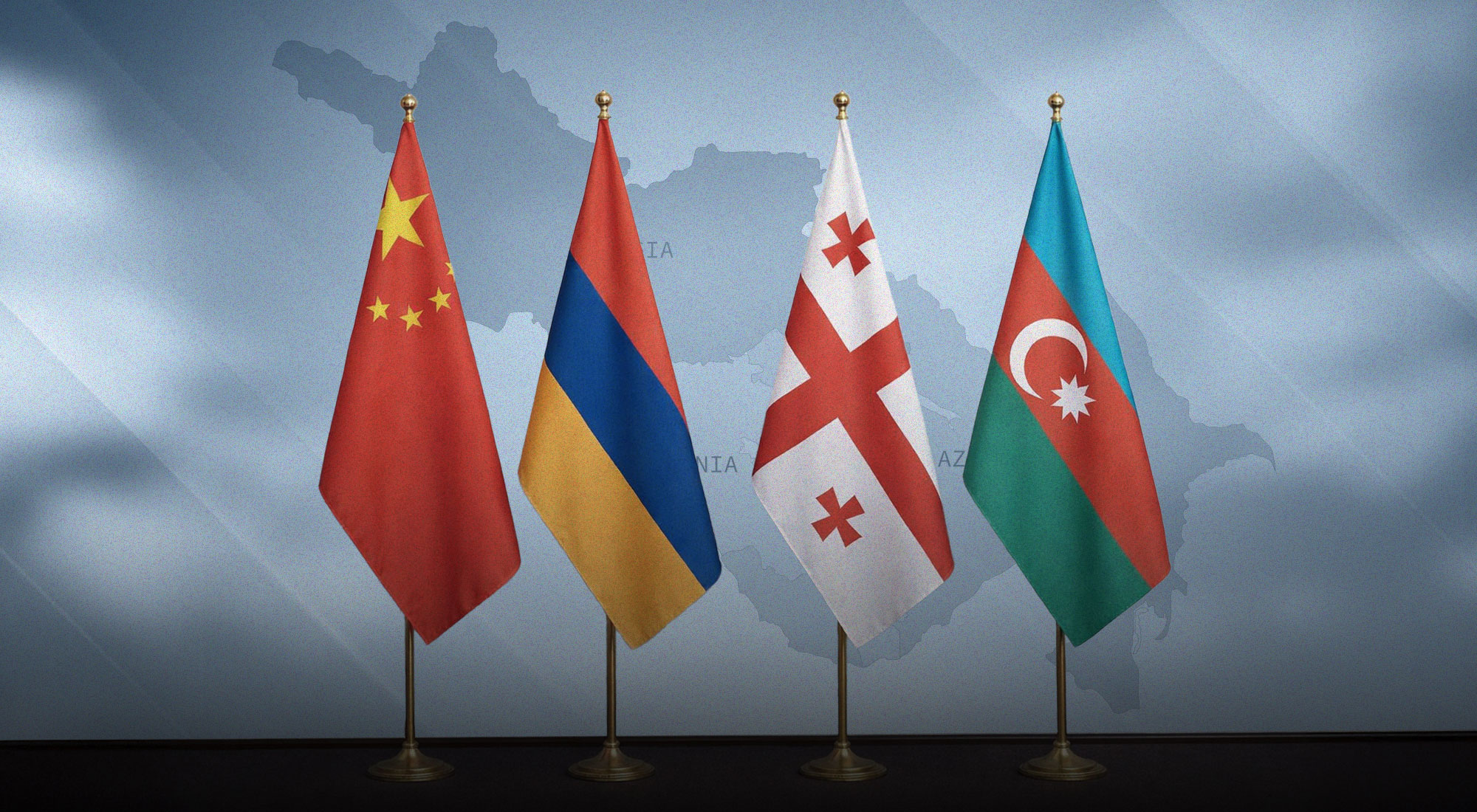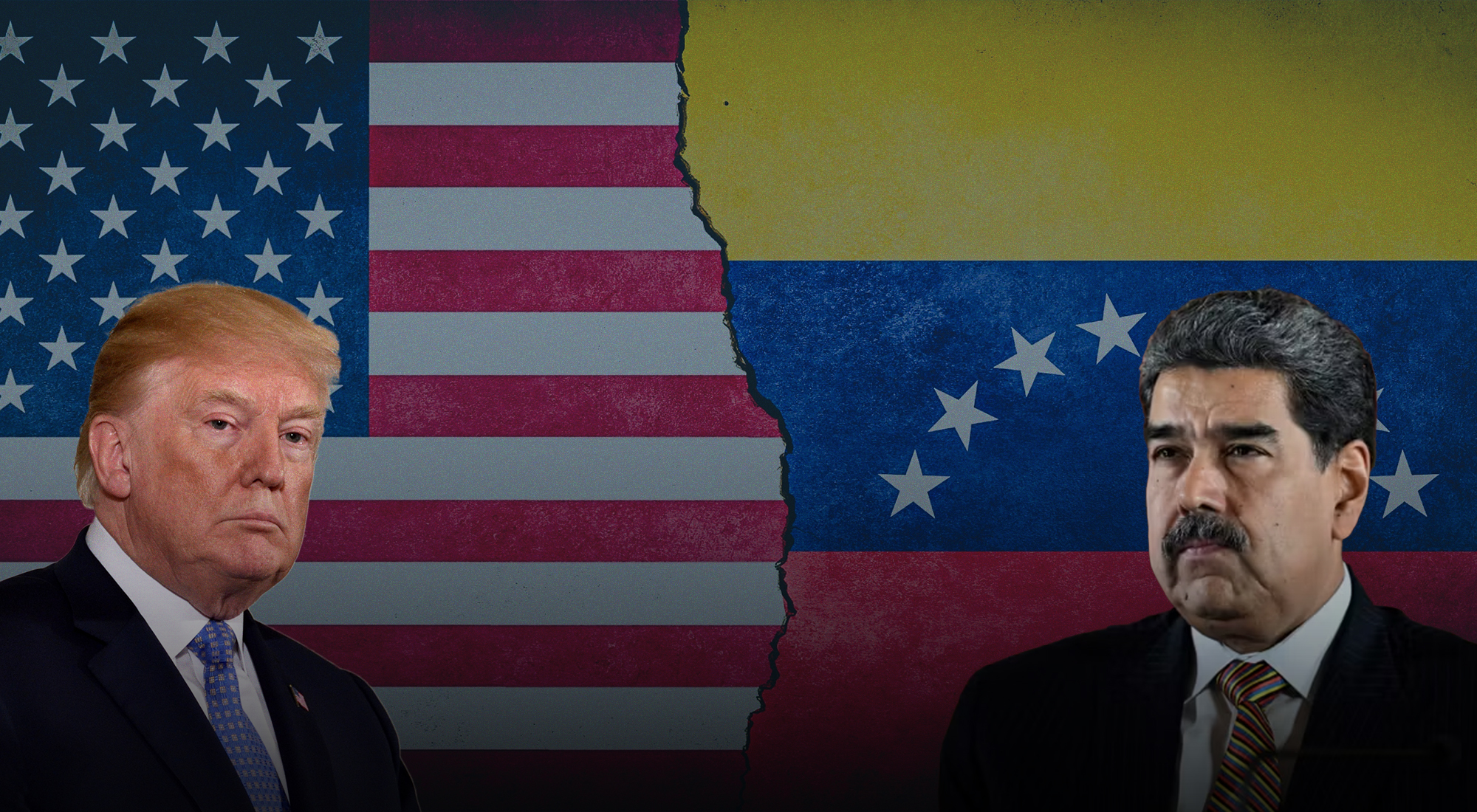Introduction
An essential component of contemporary international and regional stability is hydropolitics, which involves the strategic use and control of water resources as a political tool. Hydropolitics encompasses the complex policies, methods, plans, and actions that countries take to regulate, allot, and utilize water resources in a way that advances not only their economic objectives but also their geopolitical objectives.[1] Given that it is a limited and necessary resource, water becomes a major concern in power dynamics, especially in areas where there are shortage issues. As countries negotiate and often disagree over water access and distribution arrangements, hydropolitics frequently acts as both a motivator for cooperation and a cause of conflict.
The Middle East and North Africa (MENA), which is a politically volatile region with limited water resources, is a prime example of a region where hydropolitics is significant in determining water security. The severe lack of water in the region is due to its dry climate and limited water resources. This situation is exacerbated by the fact that the main rivers in the region, such as the Nile, Euphrates and Tigris flow across multiple national borders and face conflicting demands.[2] For example, Ethiopia’s construction of the Grand Ethiopian Renaissance Dam (GRED) on the Nile has caused tensions with Egypt and Sudan, which are heavily dependent on the waters of the Nile River.[3] In the same manner, Turkey’s large-scale dam projects on the Euphrates and Tigris rivers have had far reaching consequences for Syria and Iraq.[4] This demonstrates how hydropolitics shapes regional relationships, national policies, and the region’s approach to water management in the pursuit of water security and stability.
This paper examines hydropolitics in the two major water disputes in the MENA region: the Tigris and Euphrates conflict between Iraq, Turkey, and Syria, and the Nile River basin conflict involving Sudan, Ethiopia, and Egypt. It first examines the fundamental causes of water disputes between these countries, looking into factors, including conflicting needs for water uses, negative historical experience, and geopolitical conflicts. The paper then focuses on how hydropolitics has been institutionalized in both cases, offering insights on the challenges of managing transboundary water resources by examining the influence of institutions, treaties, and legal frameworks on water governance. The study also looks into the hydropolitical roundtable discussions and negotiations between the nations in the two basins. Additionally, the research evaluates the impact of hydropolitics on cooperation and conflict in the two basins.
Water polycrises in the MENA region
Over the course of history, the MENA has witnessed several political tensions over transboundary rivers. The increasing demand for freshwater in the region’s arid climate, rapid population growth and economic development have made water scarcity a national security priority and a strategic resource in various nations in the region.[5] To address the issue of water scarcity, the MENA nations have relied significantly on the region’s transboundary rivers for water supply. However, the dependence on such rivers in the region has sparked political disputes due to the conflicting interests of the states in securing access to these shared water resources.
The Nile River Basin:
The world’s longest river, the Nile River basin, has been and remains one of the region’s hotspots for hydropolitical tensions. Spanning across 11 countries, including the countries of Egypt, Sudan and Ethiopia, tensions over the waters of the Nile River have been ongoing for decades.[6] The three nations’ contention that they should receive most of the water allocation exacerbates the problem pitting Egypt, Ethiopia and Sudan against one another.
The disputes among nations over river allocations first arose between Egypt and Sudan in the late 1920s. The two countries have had periodic tensions around water rights and resource management in the Nile amid competing needs.[7] Established during the colonial era and mainly favoring Egypt, the 1929 Anglo-Egyptian treaty was the first source of contention. By effectively marginalizing Sudan’s interests, this treaty granted Egypt a sizable portion of the Nile’s water supply as well as the power to veto upstream projects that could impact its water supply.[8] When Sudan became independent and its own agricultural and developmental requirements increased, it started questioning the fairness of the 1929 agreement. As Sudan sought a more equal share of the Nile’s resources to sustain its growing population and economic endeavors, tensions between both countries grew. However, with the signing of the second Nile Waters agreement in 1959, the issue was partially settled. It allocated Egypt 55.5 billion cubic meters and Sudan 18.5 billion cubic meters annually, a larger share of what Sudan had under the prior agreement.[9]
The agreement between Egypt and Sudan faced strong opposition from several Nile River basin countries, due to perceived disparities in water allocation and resource management. Ethiopia was especially bitter about the agreement. While the country’s highlands, which include the Blue Nile, Atbara and Sobat rivers, contribute 80% of the Nile’s water, flowing downstream to Sudan and Egypt, Ethiopia was denied the right to Nile allocations.[10] The 1959 agreement instead allocated the entire flow of the rivers to Egypt and Sudan without considering Ethiopia’s needs or rights, overlooking the country’s significant hydropolitical input. This exclusion created a profound sense of injustice and marginalization in Ethiopia. It saw the agreement as a permanent injustice that maintained Egypt’s historical dominance at the expense of the development requirements of the upstream nations.[11]
Ethiopia’s practical issue exacerbates its objection. Considering that Ethiopia is a developing nation with significant water needs for energy, industry, and agriculture, the country needed a good portion of the Nile’s resources to bolster its economic growth and support its people. Ethiopia therefore initiated the enormous hydroelectric dam project known as the Grand Ethiopian Renaissance Dam (GERD), which is located on the Blue Nile. With the goal of producing power and bolstering its economy, Ethiopia sees the GERD as crucial to its development.[12] Just half of Ethiopia’s population presently has access to power, but the hydroelectric dam, which is almost a mile long and 145 meters high, has the potential to produce more than 6,000 megawatts, doubling the country’s current output.[13] However, downstream, especially in Egypt and Sudan, the project has caused serious worries. In fact, lately, it has become the focal point of the hydropolitical conflict.
For Egypt, the dam’s construction poses an existential threat. Given that the Nile River is the main source of water supply for Egypt, the country fears that the dam would severely impede its ability to access and use the river’s water. Therefore, during talks, Egyptians stressed that if their water share witnessed a decline, then the country would resort to war.[14] Sudan, on the other hand, has been torn between Ethiopia’s and Egypt’s conflicting interests. Despite having opposed the GERD’s building at first, Khartoum has since come around to it, pointing to the project’s ability to provide opportunities for local growth. However, the country is still concerned that the GERD’s functioning would jeopardize the security of Sudan’s own dams and make it much more challenging for the government to oversee its own development initiatives.[15]
The Tigris and Euphrates River Basin:
The longstanding and multifaceted conflict between the three major riparian states—Syria, Iraq, and Turkey over the management of the Tigris-Euphrates River basin is another example of the hydropolitical tensions occurring in the MENA region. Although these rivers are vital water supplies for all three countries agricultural, industrial, and domestic water needs, disputes over their management and distribution have existed for many years dating back to the 1960s.[16]
With the introduction of significant water and land resource development projects in the Tigris-Euphrates basin by Iraq, Syria, and Turkey, transboundary water management concerns exacerbated and became a component of the region’s political landscape.[17] Although the Tigris and Euphrates flow through the three countries, the majority of dam construction, irrigation projects, and water management strategies have been carried out unilaterally, creating a zero-sum game where the resources of the rivers are the focus of rivalry and competition.[18] Turkey, for instance, whose energy needs are met primarily by imports, has turned to hydropower on the Tigris and Euphrates rivers as a domestic energy source. In 1997, it started the second controversial hydropower project after the Ataturk Dam, known as the IIisu Dam on the Tigris River, as part of its Southeastern Anatolia Project (GAP).[19] Of the project’s 22 dams and 19 power plants, the IIisu Dam is one of the largest.[20]
Iraq and Syria have also built their own irrigation projects and dams on the Tigris and Euphrates rivers to meet their needs. One of Syria’s prominent dams is the Tabqa Dam, also known as the Thawra Dam, which was initiated in the late 1960s in cooperation with the Soviet Union to enhance its water security, agricultural productivity and energy generation.[21] In 1986, Syria also undertook a smaller scale irrigation and dam project called the Ba’ath Dam with the goal of controlling flooding and irrigation.[22] Similarly, Iraq has pursued extensive irrigation projects and dam construction on both the Tigris and Euphrates rivers. Such projects include the Haditha Dam, completed in 1985 and the Mosul Dam, completed in 1986.[23] With the construction of these projects, Iraq aimed to provide water, regulate flooding, generate hydropower, and implement irrigation.[24] However, these unilateral efforts constructed by Syria and Iraq often fell short due to upstream developments in Turkey.
According to previous studies, Turkey’s irrigation and power projects over the last few decades have dried up wetlands to the south, contaminated the Euphrates, and decreased the volume of water flowing through them. Since 1975, Turkey’s dam and hydropower projects on the Tigris and Euphrates have cut water supply to Iraq by 80%, endangering natural habitats and agriculture.[25] The dam-building projects in Ankara have also had a direct impact on Syria, lowering water flows to the country by an estimated 40%.[26] Given that Syria has a more acute water shortage than either Turkey or Iraq, this has proven especially difficult for Damascus. Comparing Syria’s total annual water outflow to its internal renewable water resources by 2011, the proportion was 160 percent, whereas Iraq’s and Turkey’s percentages were 80 and 20 percent, respectively.[27] Such lowered water flow figures raise serious concerns.
This water dispute has caused significant strain in relations between the three riparian governments, especially escalating tensions between Syria and Turkey. When the dam significantly decreased the amount of water entering Syria, Syria accused Turkey of using the water of the Euphrates for political purposes.[28] As a result, tensions peaked. The situation worsened when Syria was accused by Turkey of providing support to the Kurdish militant party, also known as the PKK.[29] However, the 1998 Adana Agreement, which contained provisions pertaining to water management, temporarily ended the threatened violent conflict.[30] Relations were further worsened by Turkey’s military involvement in northern Syria, which included controlling water resources, as a result of the Syrian Civil War in 2011.[31] There has also been a noticeable strain in relations between Turkey and Iraq. Calling for more fair water-sharing arrangements, Iraq has repeatedly opposed Turkey’s unilateral control over upstream water resources.[32] It has also condemned Turkey for aggravating its water shortage and environmental deterioration. As a result, the water controversy remained a cause of ongoing international friction between both countries.[33]
Hydropolitics in the MENA region
With its arid climate and rapidly growing population, the MENA region faces significant challenges in managing its limited water supplies. A key subject in this field is hydropolitics, the political ecology of water usage and allocation, especially concerning transboundary rivers such as the Tigris and Euphrates River and the Nile River. Through negotiations and institutionalization, the two most significant ways, countries in the region have tried to handle these complex water problems. In fact, there have been continuous attempts in recent years to institutionalize and negotiate solutions to water issues. However, complicated regional politics, conflicting interests and long-lasting historical conflicts have led to varying degrees of success in settling these disputes, despite several treaties, institutions and negotiation attempts.
In relation to the Nile Basin water dispute, the concerned countries attempted to institutionalize hydropolitics by creating treaties and frameworks for cooperatively managing and governing water resources. Although there has previously been some informal collaboration amongst the riparian nations of the Nile River Basin, the Nile Basin Initiative (NBI) is at the center of this endeavor. Established in February 1999 as an intergovernmental partnership consisting of 10 Nile basin countries, including Egypt, Sudan and Ethiopia, the initiative was primarily set to develop the river in a sustainable and equitable manner to ensure prosperity, security, and peace for all of its members.[34] Under the supervision of the NBI, the riparian governments began constructing what they hoped would be a permanent legal and administrative framework for administering the Nile River Basin, known as the Cooperative Framework Agreement (CFA).[35] Commencing on 10 May 2010, the CFA was available for signing; it has been confirmed by the Ethiopian parliament and signed by Burundi, Ethiopia, Kenya, Rwanda, Tanzania, and Uganda. However, Egypt and Sudan promptly announced their intention to not sign the deal, claiming that their “acquired rights” to the waters of the Nile River would not be preserved.[36]
The ten-point agreement, also known as the Declaration of Principles and Khartoum Declaration, signed in 2015 by Sudan, Ethiopia and Egypt in Khartoum was also another institutionalized attempt toward resolving the long-running dispute over the sharing of the Nile River’s water.[37] The agreement ought to cover a number of topics, including collaboration, fair and appropriate usage, regional integration and sustainability, and dispute resolution. However, it mainly centered on Ethiopia’s contentious building of the Great Ethiopian Renaissance Dam on the Blue Nile and made no mention of the more significant and ongoing disagreements surrounding the distribution of the Nile River water flows among all riparian states.[38] The inability to reach a completely approved agreement and persistent natural national disagreements have hindered the success of these institutional measures to resolve the issue.
A number of bilateral and multilateral agreements as well as cooperation frameworks between Turkey, Syria, and Iraq have also contributed to the institutionalization of hydropolitics over the Tigris and Euphrates Rivers conflict. The Joint Technical Committee (JTC), established in the 1980s, has served as a major institutional forum aimed at encouraging conversation and technical collaboration.[39] Since 1983, the Joint Technical Committee members, which included Turkey, Syria and Iraq, have held sixteen official ministerial sessions within the forum. However, all sixteen JTC meetings reached a deadlock due to controversial issues.[40] And in 1993, the committee disintegrated without making any progress. According to Ali et al., the conclusion of these sessions was mostly influenced by the erratic political landscape, the pursuit of immediate national interests, the absence of regularized institutions and inadequate information [41].
The 1987 protocol negotiated between Turkey and Syria also served as an essential turning point regarding the handling of the transboundary water concerns impacting the basin. It was decided that the protocol would serve as a provisional legal accord until the three riparian nations could reach a final agreement about the distribution of the Euphrates waters.[42] By signing the protocol, Turkey committed to supply an average of 500 cubic meters of water per second to Syria annually, while agreeing in another bilateral agreement signed in 1989 that Iraq would receive 58% of the water released by Turkey to the Euphrates.[43] However, according to Kurdish officials and various NGOs, Turkey did not strictly adhere to the terms of the protocol. Instead of supplying 500 cubic meters of water per second as agreed, Turkey permitted hardly 200 cubic meters to reach Syria with the construction of the Ataturk Dam, causing a sharp drop in water levels and raising the possibility of a serious humanitarian disaster.[44]
The attempts to resolve the water sharing conflicts among the nations in the Nile Basin have mostly relied on negotiations and roundtable discussion over the Nile River conflict, despite frequently daunting obstacles. The four tripartite rounds of ministerial negotiations on the GERD held between the three riparian states, Egypt, Ethiopia, and Sudan, represent one of the significant mediation attempts to address the water dispute and primarily the GERD-related concerns. Since its launch in November 2019, the United Nations has been the first to step in to host and facilitate the roundtable talks between Egypt, Ethiopia and Sudan in Washington, D.C.[45]
Although the three foreign ministers emphasized their shared commitment to working together to reach a mutually beneficial agreement on the dam’s operation and filling, as well as to establish a clear process for carrying out that commitment in line with the 2015 Declaration of Principles, there has been no complete compromise established. In fact, Ethiopia rejected all the formulations proposed, arguing that “it will not constrain its right to use the Nile waters for future development.”[46] Following deliberation, the United Nations Security Council released a statement on 15 September 2021, urging the parties in dispute to pick up the second round of negotiations under the provision of the African Union (AU).[47] However, the consultations headed by the AU during the second round of talks in Ethiopia have also failed to bring about an agreement between Ethiopia and its downstream neighbors.[48] Similarly, the third round of talks that took place in Egypt and the fourth round of talks, held in Addis Ababa have also resulted in a deadlock.[49] As seen, there has been no complete compromise established despite these attempts, and dialogues have repeatedly stagnated, highlighting the enduring difficulties and deeply ingrained national interests that obstruct effective dispute resolution.
The stalemate in all four rounds of discussions is mostly due to Ethiopia’s unilateral moves, the lack of formal agreements, and the political mistrust present among the three nations. Ethiopia has decided to move on with filling the dam in 2020, despite strong opposition from Egypt and Sudan, who fear major cuts to their Nile water supplies.[50] And in 2023, the country announced that it had completed the fourth and final phase of filling its dam, resulting in more fear among Egypt and Sudan.[51] Diplomatic efforts and discussions aimed at settling the water-sharing conflicts have been further hampered by the ongoing turmoil in Sudan. An agreement on the management and distribution of Nile waters has been difficult to achieve because of Sudan’s internal instability, which has impeded the country’s capacity to engage in trilateral negotiations successfully.[52] As a result, the hydropolitical problems brought on by the GERD have become more difficult to resolve cooperatively and have further escalated regional tensions.
The Tigris and Euphrates River issue has also been the subject of roundtable discussions and negotiations, although limited. The tripartite roundtable talks held between Turkey, Iraq, and Syria to administer both water channels jointly and negotiate ongoing water concerns date back to the 1960s, however, a thorough agreement was never achieved because of the parties’ fundamental differences and conflicting interests.[53] Finding a middle ground has also been the goal of high-level negotiations, such as those held in Baghdad and Ankara, frequently in reaction to severe water shortages or rising tensions. However, despite the several negotiable attempts that have been made, the issue has remained unsolved.[54] The strained turbulence that the relations between Turkey and Syria have witnessed in the years prior to 2011 and after has further restricted the formation of talk rounds and the reach of a formal agreement between the three riparian states.[55] Yet given that Iraq has recently played the role of a mediator, the country is working on reconciliation between Turkey and Syria, which has opened the door to conducting new rounds of talks between all three riparian countries. Officials from the two neighboring countries will meet in Baghdad in the coming days to foster communication and discuss the potential of the ongoing water dispute.[56]
Prospects of hydropolitics in the MENA region
Given the above circumstances it is still unclear what the future holds for the Middle East’s water issues, especially those that center on the Nile River and the Tigris and Euphrates rivers.
Concerns about national security and historical grievances are especially present in the Nile River dispute. As Ethiopia continues to develop its GERD, Egypt remains concerned that its vital water supply may be compromised. Therefore, the chances of a negotiated settlement seem slim as long as these political and historical conflicts continue. Moreover, since the Nile River issue has not yet been permanently resolved by international mediation, including attempts by the United Nations Security Council and African Union, it is likely to continue to be a major geopolitical obstacle for some time to come.
On the other hand, there is a better chance of a resolution for the dispute involving the Tigris and Euphrates Rivers and Turkey, Syria, and Iraq. The main cause of this hope is Iraq’s growing prominence as a mediator. There is a growing realization that collaboration is necessary given the extreme water stress that all three nations are experiencing. Recent diplomatic contacts indicate a readiness to reach practical agreements, with an emphasis on advantages to both parties, such as water-sharing plans and cooperative infrastructure initiatives. Iraq has taken the initiative in its mediation efforts, indicating a move toward cooperation and maybe establishing a standard for future water management in the area. Should this collaborative attitude persist, it may open the door to more efficient and long-lasting water governance, mitigating the adverse effects of the water shortage in the Middle East.
Conclusion
The analysis of disputes pertaining to water in the MENA region, namely those involving the Nile River basin and the Tigris and Euphrates rivers, emphasizes the intricate nature of hydropolitics and the pressing need for cooperative water management. These conflicts, driven by national interests at odds with one another, geopolitical tensions, and historical grudges, highlight the challenges of managing shared water resources in an area characterized by acute water scarcity and political instability.
The GERD project has exacerbated the long-running conflict between Ethiopia, Sudan, and Egypt over the Nile River. Despite numerous attempts at mediation, progress toward a permanent resolution has been hampered by the relevant parties’ uncompromising positions and lack of confidence. The conflict involving Turkey, Syria, and Iraq along the Tigris and Euphrates rivers provides additional evidence of the complexity of upstream-downstream relationships and the significant impact that national water policies have on regional stability.
This study has demonstrated that the institutionalization of hydropolitics through treaties and legal frameworks has a substantial impact on how water governance is constituted in these disputes. The success of these processes will, however, largely depend on how prepared the governments of the riparian areas are to engage in meaningful dialogue and make concessions. The study has also highlighted the importance of roundtable talks and negotiation in fostering cooperation and preventing conflicts from escalating.
It is imperative that states work together to find cooperative solutions to the water dilemma, as there is a risk that non-cooperation will spark water wars. It is critical that nations implement fair and sustainable water management strategies because potential conflicts over water resources could seriously jeopardize regional stability.
The willingness of nations to put aside their past grievances and embrace collaboration will determine the chances for future peace negotiations, including these conflicts. All parties can benefit from long-term solutions that are achieved through strong legal frameworks and effective diplomacy. Water conflicts can be transformed into possibilities for peace and development in the MENA area by cultivating a collaborative culture, which might serve as a model for international water management.References
[1] Mohsen Nagheeby, and Jeroen Warner, “The Geopolitical Overlay of the Hydropolitics of the Harirud River Basin.” International Environmental Agreements: Politics, Law and Economics 18, no. 6 (2018): 839–60. https://doi.org/10.1007/s10784-018-9418-9.
[2] Mohammed Mahmoud, “The Looming Climate and Water Crisis in the Middle East and North Africa,” Carnegieendowment.org, April 19, 2024, https://zip.lu/3jDjV
[3] Amit Ranjan, “The Grand Ethiopian Renaissance Dam and Its Discontents,” Africa at LSE, February 28, 2024, https://zip.lu/3jDkR
[4] Achref Chibani, “Water Politics in the Tigris-Euphrates Basin,” Arab Center Washington DC, May 30, 2023, https://zip.lu/3jDkV
[5] Sabena Siddiqui, “Climate Change Poses Water Security Risks for MENA Countries,” July 28, 2021, https://zip.lu/3jDm7
[6] Al-Anani, Khalil, “Water Conflict between Egypt and Ethiopia: A Defining Moment for Both Countries,” Arab Center Washington DC, June 16, 2020, https://zip.lu/3jDmb
[7] Duncan Gumba, “Will Egypt-Ethiopia-Sudan Diplomacy Placate Other Nile Countries?,” ISS Africa, February 2, 2018, https://zip.lu/3jDmd
[8] Kimenyi, Mwangi, and John Mbaku, “The Limits of the New ‘Nile Agreement,’” Brookings, April 28, 2015, https://zip.lu/38kAx
[9] “Nile Water Resource Dispute Splits Region | Climate-Diplomacy,” Climate-Diplomacy.org, April 11, 2015, https://zip.lu/3jDmg
[10] Mohyeldeen, Sherif, “The Dam That Broke Open an Ethiopia-Egypt Dispute,” Carnegie Endowment for International Peace, February 12, 2021, https://zip.lu/3jDmi
[11] Minga Negash, Seid Hassan, and Mammo Muchie, “Misplaced Opposition to the Grand Ethiopian Renaissance Dam,” Sudan Tribune, April 30, 2014, https://zip.lu/3jDBB
[12] “Who Owns the Water of the Nile?,” We Are Water, November 2, 2023, https://zip.lu/3jDmj
[13] Yohannes Woldemariam, and Genevieve Donnellon-May, “The Politics of the Grand Ethiopian Renaissance Dam | Climate-Diplomacy,” Climate-Diplomacy.org, February 2, 2024, https://zip.lu/3jDAp
[14] Ahmed Al Shalabi, “Grand Ethiopian Renaissance Dam and Its Impact on Egypt and Sudan.” Journal of Namibian Studies 33, no. 1 (2023): 1113, https://doi.org/10.59670/jns.v33i.484.
[15] John Mukum Mbaku, “The Controversy over the Grand Ethiopian Renaissance Dam,” Brookings, August 5, 2020, https://zip.lu/3jDrd
[16] “EU Influence on the Euphrates-Tigris Conflict, Middle-East | Climate-Diplomacy,” Climate-Diplomacy organization, 2014, https://zip.lu/3jDmn
[17] Prof. Dr. Aysegul Kibaroglu, “OPINION – A Significant Field of Diplomacy: Transboundary Water Politics,” September 8, 2023, https://zip.lu/3jDmp
[18] Achref Chibani, “Water Politics in the Tigris-Euphrates Basin,” Arab Center Washington DC., May 30, 2023, https://zip.lu/3jDkV
[19] Salah Nasrawi, “Turkish Dams on Euphrates and Tigris: A Water Dilemma for Iraq,” Ahram Online, February 4, 2018, https://zip.lu/3jDAq
[20] Paul Hockenos, “Turkey’s Dam-Building Spree Continues, at Steep Ecological Cost,” Yale E360, October 3, 2019, https://zip.lu/3jDms
[21] “Syria’s Tabqa Dam: A Strategic Prize,” Arab News, March 29, 2017, https://zip.lu/3jDAr
[22] “Transboundary River Basin Overview – Euphrates-Tigris,” 2009, Food and Agriculture Organization of the United Nations, https://zip.lu/3jDmu
[23] Nasrat Adamo, Varoujan K. Sissakian, Nadhir Al-Ansari, and Malik Elagely, “Comparative Study of Mosul and Haditha Dams in Iraq: Different Construction Materials Contribute to Different Designs.” Journal of Earth Sciences and Geotechnical Engineering 8, no. 2 (2018): 71–89, https://zip.lu/3jDmv
[24] Nadhir Al-Ansari, Nasrat Adamo, Sven Knutsson, Jan Laue, and Varoujan Sissakian, “Mosul Dam: Is It the Most Dangerous Dam in the World?,” Geotechnical and Geological Engineering 38, no. 5 (2020): 5179–99, https://doi.org/10.1007/s10706-020-01355-w
[25] Achref Chibani, “Water Politics in the Tigris-Euphrates Basin,” Arab Center Washington DC., May 30, 2023, https://zip.lu/3jDkV
[26] Connor Dilleen, “Turkey’s Dam-Building Could Create New Middle East Conflict,” The Maritime Executive, November 6, 2019, https://zip.lu/3jDmG
[27] Connor Dilleen, “Turkey’s Dam-Building Could Create New Middle East Conflict,” The Maritime Executive, November 6, 2019, https://zip.lu/3jDmG
[28] Erman Çete, “Weaponization of Water: Turkey Flexes Its Muscles over Syria and Iraq,” The Cradle, August 22, 2022, https://zip.lu/3jDBC
[29] Soner Cagaptay, “Syria and Turkey: The PKK Dimension,” The Washington Institute, April 5, 2012, https://zip.lu/3jDtX
[30] Sinem Cengiz, “Why Is the 1998 Adana Pact between Turkey and Syria Back in the News?,” Arab News, January 25, 2019, https://zip.lu/3jDBE
[31] Branislav Stanicek, “Turkey’s Military Operation in Syria and Its Impact on Relations with the EU,” European Parliamentary, European Parliamentary Research Service, 2019, https://zip.lu/3jDuo
[32] Achref Chibani, “Water Politics in the Tigris-Euphrates Basin,” Arab Center Washington DC., May 30, 2023, https://zip.lu/3jDkV
[33] Mark Dohrmann, and Robert Hatem., “The Impact of Hydro-Politics on the Relations of Turkey, Iraq, and Syria,” Middle East Journal 68, no. 4 (2014): 567–83, https://www.jstor.org/stable/43698183.
[34] “Dispute over Water in the Nile Basin | Climate-Diplomacy,” Climate-Diplomacy.org., 2014, https://zip.lu/3jDmI
[35] Mwangi Kimenyi, and John Mbaku, “The Limits of the New ‘Nile Agreement,’” Brookings, April 28, 2015, https://zip.lu/38kAx
[36] Ibid.
[37] Monica Moyo, “Egypt, Sudan, and Ethiopia Sign Nile Dam Agreement (March 23, 2015) | ASIL,” Www.asil.org, March 27, 2015, https://zip.lu/3jDmS
[38] Mwangi Kimenyi, and John Mbaku, “The Limits of the New ‘Nile Agreement,’” op. cit.
[39] “Water: A Source of Conflict of Coopeariton in the Middle East?,” n.d. Republic of Turkey – Ministry of Foreign Affairs. Republic of Turkey – Ministry of Foreign Affairs, https://zip.lu/3jDmV
[40] Hans Günter Brauch, Peter H Liotta, Antonio Marquina, Paul F Rogers, and Mohammad El-Sayed Selim, Security and Environment in the Mediterranean. Springer Science & Business Media, 2012, https://zip.lu/3jDn4
[41] Ali Akanda, Sarah Freeman, and Maria Placht. “The Tigris-Euphrates River Basin: Mediating a Path towards Regional Water Stability,” The Fletcher School Journal for issues related to Southwest Asia and Islamic Civilization, 2007, https://zip.lu/3jDn5
[42] Tuğba Evrim Maden, “The Turkish Perspective on the Euphrates and Tigris River Basin,” ISPI, February 24, 2020, https://zip.lu/3jDn7
[43] “Water Security Takes Center Stage in Syria-Turkiye Talks,” 2023, The Cradle. May 3, 2023, https://zip.lu/3jDBF
[44] Sarah Glynn, “Turkey Is Reportedly Depriving Hundreds of Thousands of People of Water,” Open Democracy, June 14, 2021, https://zip.lu/3jDn8
[45] Amit Ranjan, “The Grand Ethiopian Renaissance Dam and Its Discontents,” op. cit.
[46] Mohamed S Helal, and Hesham M Bekhit, “So Near, yet so Far: An Egyptian Perspective on the US-Facilitated Negotiations on the Grand Ethiopian Renaissance Dam,” Water International 48, no. 5 (2023): 1–35. https://doi.org/10.1080/02508060.2023.2230851
[47] Amit Ranjan, “The Grand Ethiopian Renaissance Dam and Its Discontents,” op. cit.
[48] “Second Round of Talks between Egypt Ethiopia and Sudan on Grand Renaissance Dam Inconclusive,” The Water Diplomat, October 10, 2023, https://zip.lu/3jDnc
[49] Yohannes Girma, “The Stalemate over the Negotiation Process of the Grand Ethiopian Renaissance Wedajo Dam (GERD),” Mediterranean Journal of Social Sciences 15, no. 3 (2024), https://zip.lu/3jDnd
[50] Arestakes S Simavoryan, “Turkey–Iraq. Will the Water Conflict Be Over?,” ARVAK . May 5, 2024, https://zip.lu/3jDne
[51] Adele J Kirschner, and Katrin Tiroch, “The Waters of Euphrates and Tigris: An International Law Perspective,” Brill 16, no. 1 (2012): 329–94. https://doi.org/10.1163/18757413-90000021
[52] Bayram Balci, “Turkey’s Relations with the Syrian Opposition,” Carnegieendowment.org, April 13, 2012, https://zip.lu/3jDng
[53] French Press Agency, “Ethiopia to Fill Blue Nile Dam despite Neighbors’ Opposition,” Daily Sabah, April 7, 2021, https://zip.lu/3jDyI
[54] “Grand Ethiopian Renaissance Dam: Why It Is Worrying Egypt and Sudan,” BBC News, September 12, 2023, https://zip.lu/3jDyQ
[55] Albás, Jan Gallemí, “Impact of the Sudanese Civil War on Egypt, Sudan and Ethiopia’s Negotiation of the Grand Renaissance Dam,” University of Navarra, 2024, https://zip.lu/3jDAc
[56] “Turkiye, Syria Rapprochement Talks to Resume in Baghdad,” Middle East Monitor, June 11, 2024, https://zip.lu/3jDnh








